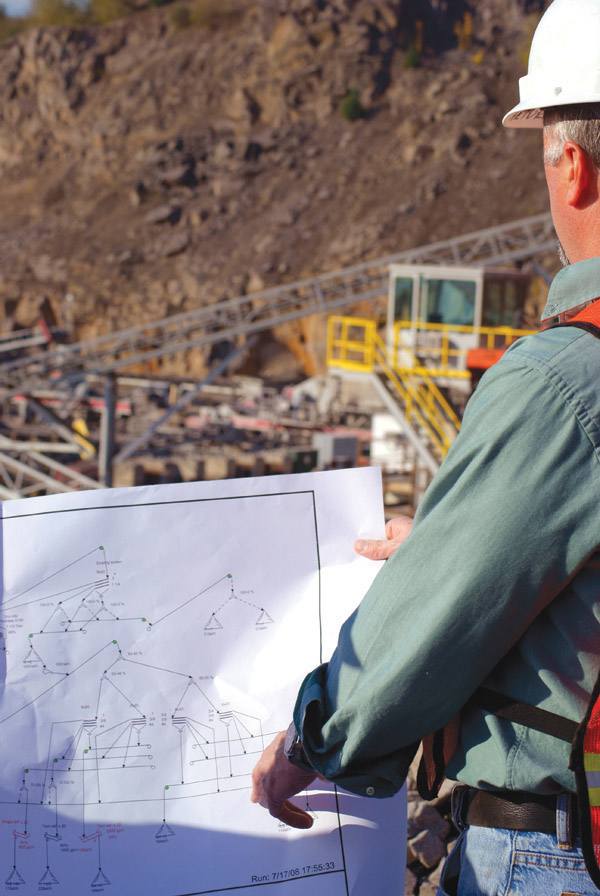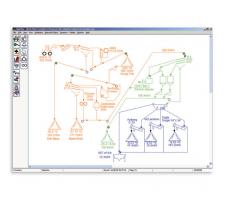
Imagine being able to model aggregate production right from the feed hopper to the output conveyor and predict actual productivity? Well according to Bedrock Software, this can easily be achieved
Growing emphasis on cost per tonne production means that getting the maximum performance out of crushing and screening equipment is essential. But with so many different settings on all the machines on offer, it can be difficult to know exactly what the optimum is.
But software is available to help take the guess work out of machine set up and one of the longest running independent systems is
"Some major manufacturers offer performance modelling for their own equipment but most quarries operate machines from a mix of manufacturers, so want a system that can cover their whole operation," explained Bedrock president Bryan Lewis. "AggFlow allows users to model their existing plants based on manufacturers' information or their own on-site data." AggFlow was first launched 15 years ago after nuclear engineer Lewis spotted potential to transfer his programming skills over to the aggregates market during a visit to
"The system allows quarry operators to trial different equipment set-ups and layouts before they buy the equipment," explained Lewis. "And established sites can also use the software to tweak the operation and ensure they are getting maximum performance or re-set existing equipment to meet new product or specification demands without trial and error.
"One quarry in Hawaii that has recently started using the system was looking at how to meet a new specification. On site trial and error may have taken two or three days to check that the machine settings were correct but by modelling the set up first, the quarry was able to hit the predicted output straightaway." According to Lewis, for many sites AggFlow can help identify areas where further investment is needed and pinpoint the type of equipment needed to boost production. "It seems to be a common theme that sites usually need more screens rather than additional crushers to improve performance," he said. "This kind of information can really help reduce unnecessary investment - screens often cost 30% of new crushing equipment." As well as using data from manufacturers about their equipment, the software also takes the size of the feedstock and rock type into account. This information can be selected from pre-set figures or by the user entering their quarry-specific data and the system also includes aggregate mass and water mass in its calculations.
AggFlow uses a simple drag and drop system to allow users to create a flow diagram to represent their crushing and screening equipment and clicking on each item of plant allows operational figures to be selected or inputted.
Technical support for the program is available over the phone or via email and according to Lewis, once users are familiar with AggFlow they generally need minimal support as the system is intuitive.
"The initial cost of AggFlow is US$7000 (e5200) and then customers pay an annual licence fee of around US$1200 (e943)," said Lewis. "But for the fee they get 10 to 15 minor updates a month to add in new equipment data and then once or twice a year we carry out a major upgrade - the latest was to add the water mass balance facility. For some small quarries the cost may seem steep but ones that have opted to use the system have usually recovered the cost through improved production very quickly."
















